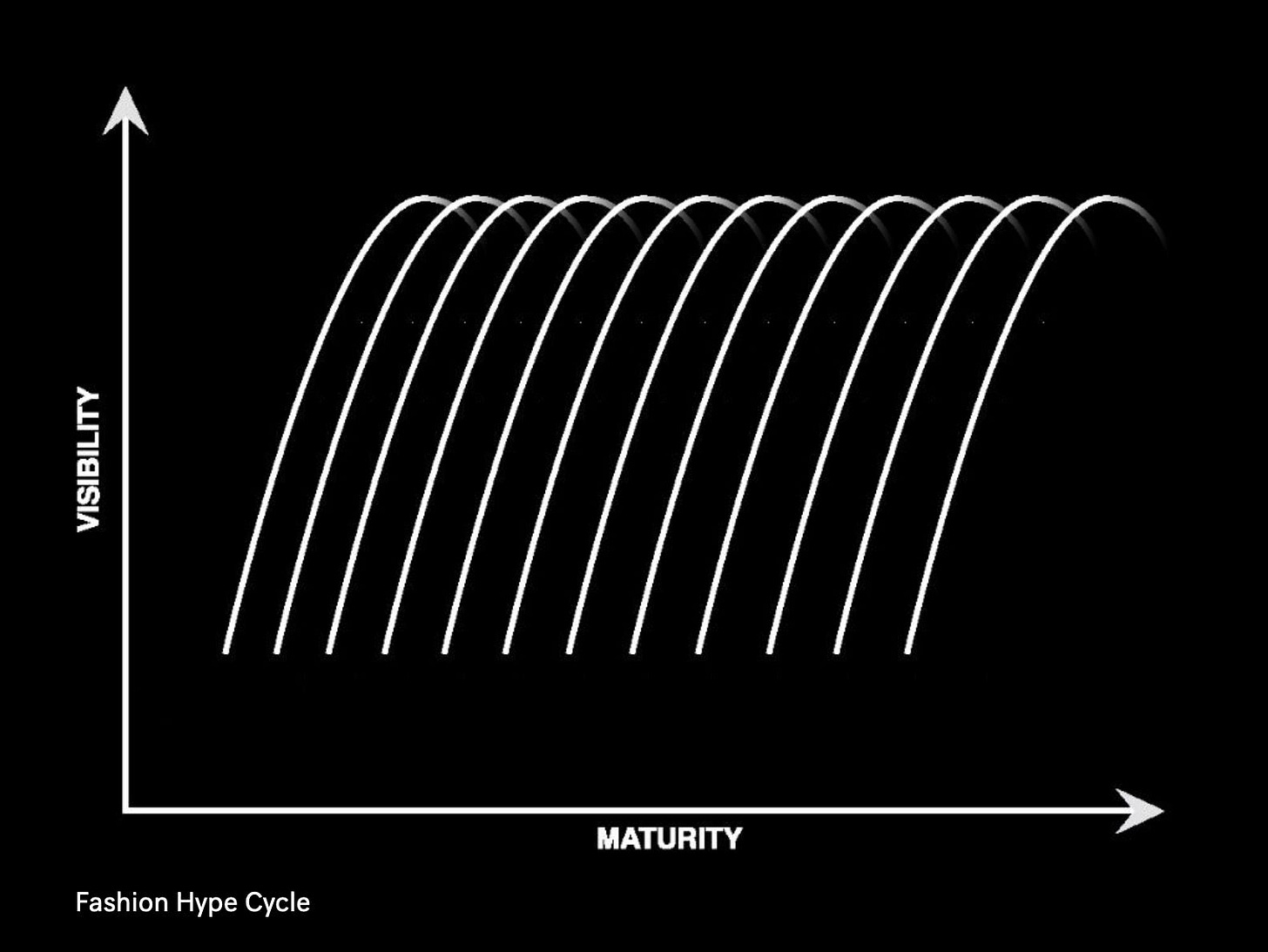✘ A short meditation on the politics of sounds: from col legno to gqom
And: On spatial computing & metaverse; Fashion and music forge identities; Grand Theft Audio; Guide to being early; Owning your data
Sometimes, when I listen to music I wonder where a certain sound comes from and what it means for the person who made that music. I can have this with music as disparate as Berlioz’ Symfonie Fantastique and the gqom of DJ Lag. In both these musics I hear the resonances of experiences and other people. I also hear musicians, composers, trying to make sense of the world around them. In both, I hear a shifting socio-political movement - sounds are shifting around bodies and instruments.
For those of you not familiar with either of these musics, here’s examples. First DJ Lag’s Ice Drop, where I invite you to pay special attention to the dance moves of the people in the video. Second, the fifth movement of the Symfonie Fantastique where I invite you to pay special attention to around the 8’18” mark where you see and hear the violinists hit their strings with the wood of their bow - col legno.
This might seem world’s apart, but here’s two composers operating sounds to make clear a feeling, a sensation, and each creates a sound field of knowledge in the process.
Symfonie Fantastique
Berlioz’ masterpiece takes us through the inner and outer world of an artist madly in love, losing his way and overdosing on opium ending in a horrible dream of death and witches. It’s quite something to imagine this was first performed in 1830, or the highpoint of Romanticism. I tend to call Beethoven heavy metal, but Berlioz paved the way for Merzbow and fellow noise musicians.
Gqom
Born in the townships of Durban, South Africa, gqom is one of those genres built to reflect what people wanted to dance to. Not too dissimilar to the evolution of footwork in Chicago, it lives and breathes its environment - the dancefloor, the bedroom production studios, the culture of the township. It’s got broken beats and drops that don’t happen. It’s a menacing sound that invites movement.
The politics of sounds
Violinists hate to play col legno - that striking of the wood of the bow on the snares - because it destroys their bow. But it helped Berlioz make a point about the nature of the dream his protagonist has. One of the defining features of early gqom was how compressed it all was. Producers sending compressed mp3 files around via websites and WhatsApp groups that DJs would then play at the next rave. The former seems to represent an inner world, while the latter brings an outer world into the music. Sometimes that even happens literally - recording sounds at a party and then making a track with them.
What both share, is a kind of grasping, a bringing-together yet a resistance to a norm. The protagonist in the Symfonie Fantastique is basically a stalker who overdoses. The protagonists of gqom sit in a wildly different political soundscape. It’s impossible to comprehend both together, as one. At the same time, both musics push a sonic boundary to make explicit what they experience and share with others. Both present a fracture. In the words of Wendy Carlos: “The way you find the limit is by going past it.” And while we see those limits being pushed, music has a political function in finding the sounds that expose the fractures.
LINKS
👓 On Spatial Computing, Metaverse, the terms left behind and ideas renewed (Matthew Ball)
“Consensus that we are on the cusp of a new era in which the internet isn’t something we reach for, or that runs underground and is transmitted through the air. Instead, it will be all around us and we will be in it. That the world will represented by an infinite number of 3D simulations that are running in the buildings we walk through and the cars that drive by, which dynamically manage the traffic lights of our street and manage our checkouts as we leave a store, and which involves many objects that are not “real” in the sense they cannot be touched, yet nevertheless interacted with by millions each day.”
✘ Good historical overview of some of the terms the major tech companies throw around. More importantly, what all the developments and developers seems to find consensus on, as Matthew says, is that what we now know as the Internet will continue to envelop us.
👟 Fashion & music are forging new cultural and sub-cultural identities (Yatin Srivastava)
“The image of an artist has gone beyond the artwork, the set design, or just the visuals of the music, clothing, and styling have now also become synonymous with the image of an artist. This modern shift is like a full circle moment - from Vivienne Westwood championing the innovation of a brand new genre, to clothing now supporting all kinds of music scenes across the world. These clothes that artists wear have also made their way into the community, and sporting those brands has now become a part of the community lifestyle, which is an incredibly strong bonding feature. From here, I see this expansion growing even further, with more artists collaborating with brands to create collections and clothes, that, in turn, will replace the idea of “Merchandise”.”
✘ Fashion and music are intertwined and this piece shows how local scenes take up both elements to cement a community around a variety of signals.
🚘 Grand Theft Audio (Micah Peters)
“I should say that I never got to visit Vice City on a PS2, but I did eventually get there on a homebrewed PSP, playing 2006’s Vice City Stories. I couldn’t give you a single story beat, but the feelings are clear: weaving in and out of traffic on a PCG bike while listening to the other Flock of Seagulls hit, “Space Age Love Song,” on Nonstop FM before smacking face first into the back of an 18-wheeler and getting an instant “WASTED” message across the screen. If you’ve played you understand. If you haven’t, then let me share that it’s a common affliction: ask anyone what they remember about GTA and it probably won’t be a mission, or a character, but an absurd moment of synchronicity that couldn’t have occurred anywhere else.”
✘ An excellent piece highlighting both the importance and effect of music in GTA. More importantly, it captures the feeling created by the way the gameplay and the music meld together in moments.
🌄 The Nemesis guide to being early (nemesis.global)
“In crypto many use the mental model of the tech hype cycle, but the reality is more like the fashion cycle below, with its shepard’s tone-like dynamics, in which each new thing is supplanted by another new thing, and no linear pattern emerges. Things very rarely reach the plateau of productivity, more often falling straight to Hades through the trough of disillusionment. No one seems to follow up on the hyped project of yesterday.”
✘ This goes way beyond crypto and is a signal of our current cultural society. If we’re all trying to be early, nobody ever is.
🫥 The Bull Case for Owning Your Data (Dan Fowler)
“In contrast to copyright data, transaction & engagement data is consumer-generated, directly related to and influencing user experience, and generally more open for individual companies to generate or aggregate. Generating new data points, as the opening examples highlighted, is the most important aspect to consider, as any project built on top of a closed database through APIs will at some point in the future very likely have the rug pulled from under it.”
✘ This is it, we need to build outside of the major structures and find new value and own that.
MUSIC
So much good music came out last Friday, but I want to highlight Kali Malone’s stellar All Life Long. It’s music for pipe organ, choir, and brass quintet. Put this on and take it in. I can tell you that if you any emotions simmering beneath your surface, this music will make it rise up.





I like the comparison between the Berlioz and DJ Lag pieces here. Good timing for me too as I prepare a class for next week on global beats. We looked at batida/kuduro this week and are going to cover gqom and other examples next.